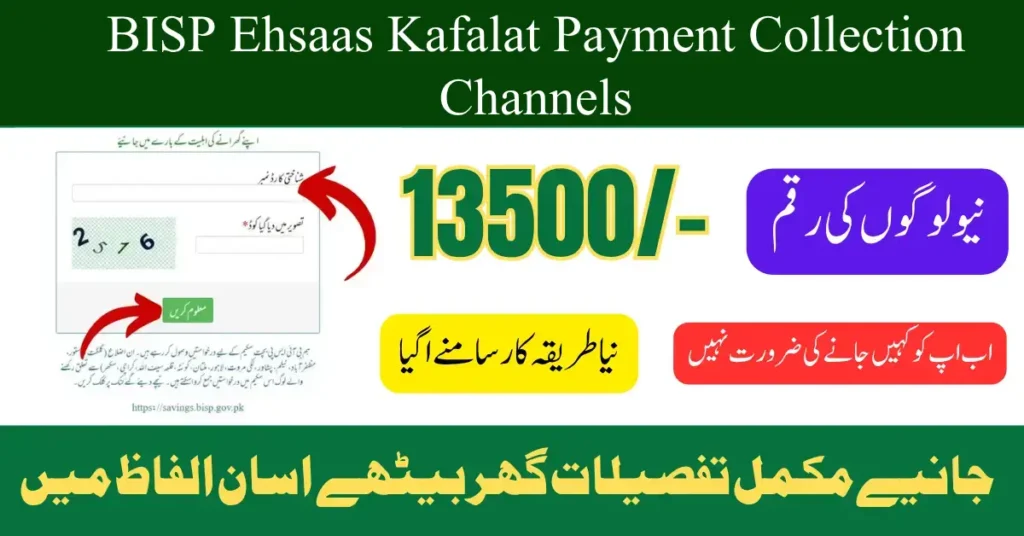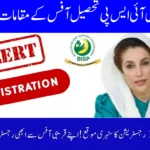
Are you waiting for your Ehsaas Kafalat payment and scratching your head wondering “Where should I collect it from?” Don’t worry, you’re not alone! In this friendly guide, I’ll explain everything you need to know about the BISP Ehsaas Kafalat Payment Collection Channels – 2025 Update. Whether you’re in the city or a small village, there’s a simple way for you to get your payment without any drama.
What is BISP Ehsaas Kafalat?
Before we jump into collection channels, let’s clear one thing: what is BISP Ehsaas Kafalat?
The Benazir Income Support Program (BISP) under the Ehsaas umbrella is a financial support program for low-income families in Pakistan. Through the Kafalat scheme, eligible women receive regular cash payments to help them manage household expenses. In 2025, the government has made it even easier to get these payments through different channels.
Who is eligible for Ehsaas Kafalat payments?
Here’s a quick checklist to see if you (or your relative) might be eligible:
- Women from low-income families
- Families registered in the National Socio-Economic Registry (NSER)
- Those who do not own significant property or businesses
- Families without any formal government jobholders
- Women holding valid CNIC (Computerized National Identity Card)
If you tick all these boxes, you’re good to go!
Main payment collection channels in 2025
Now, let’s get to the main part — how and where to collect your payments. In 2025, the government has introduced multiple collection channels to make life easier. No more endless waiting or standing in sweaty queues for hours!
1. Bank branches
Many people now prefer to collect payments directly from bank branches. The good thing is:
- You can visit designated branches of Habib Bank Limited (HBL) and Bank Alfalah.
- Payments are handed over after biometric verification, so no one else can take your money.
- Banks are usually more secure and comfortable (bonus: you might get free chai if you’re lucky!).
2. ATM machines
ATMs are a lifesaver if you want to avoid human interaction and collect your cash anytime. Here’s why people love them:
- Available 24/7 (even if you wake up at 3 am craving biryani money!).
- Simple biometric or PIN-based verification.
- Less crowd and faster service.
3. Retail shops and designated agents
The government has partnered with retail agents in local markets. You might have seen small shops with “Ehsaas Kafalat” or “BISP payment” boards. You can:
- Visit these shops for cash disbursement.
- Complete biometric verification using your CNIC.
- Enjoy quick service without long bank queues.
4. Mobile banking
In 2025, mobile banking has become very common (even your chacha knows about it now!). Through certain mobile wallets or banking apps, you can:
- Receive your payment directly into your mobile account.
- Transfer to other bank accounts if needed.
- Withdraw cash from any supported ATM.
5. Special payment camps
For those living in remote or hard-to-reach areas, the government still sets up special camps. Features include:
- Temporary collection points near your village.
- Support staff to help you with biometric checks.
- Extra security and safety measures.
How to collect your payment safely
It’s super important to collect your payment safely and avoid scams. Here are a few golden tips:
- Always carry your original CNIC.
- Avoid giving your fingerprint or CNIC copy to strangers.
- Count your cash immediately and ask for a receipt.
- If someone asks for a “service charge,” report them right away! (The payment collection is free.)
Benefits of the updated channels
The new channels come with some big benefits:
- Less waiting time
- More options close to your home
- Safer and more secure transactions
- More transparency (no funny business!)
Conclusion
Thanks to the BISP Ehsaas Kafalat Payment Collection Channels – 2025 Update, collecting your payment has become smoother than ever. Whether you choose the comfort of a bank branch, the speed of an ATM, the convenience of a local shop, or the flexibility of mobile banking, the goal is the same: make sure you get your rightful support easily and with a smile.
So, next time you hear “Ap ka paisa mil gaya hai”, you’ll know exactly where to go without any confusion. Happy collecting!
FAQs
1. How often will I get Ehsaas Kafalat payments?
Usually, payments are given every three months, but it’s always good to keep an eye on SMS updates from 8171 or your local representative.
2. Can I send someone else to collect my payment?
No, you cannot. Payments require biometric verification, so only you can collect your payment using your fingerprint.
3. What should I do if I didn’t get my payment message?
First, double-check your eligibility through the 8171 portal. If still unsure, visit your nearest Ehsaas center or BISP office for help.
4. Is there any fee for collecting Ehsaas Kafalat payments?
Absolutely not! Collection is 100% free. If anyone asks for money, report them immediately.
5. Can I get my payment through a mobile wallet?
Yes, you can receive payments through certain mobile wallets or mobile banking accounts that are officially partnered with the program.
6. What documents do I need to bring when collecting my payment?
You only need your original CNIC and yourself (plus your thumb, of course!).
There you have it! A complete, friendly, and easy guide to help you understand your payment collection options for 2025. If you still have questions, don’t hesitate to ask your local Ehsaas office — or your friendly neighborhood blogger (that’s me!).

